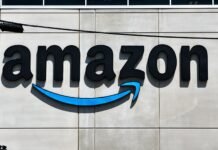
Marketing budgets continue facing intense pressure as digital channels multiply and consumer attention fragments. Many organizations watch their advertising investments deliver diminishing returns despite increasing expenditure. Such a challenge emerges from manual processes struggling to optimize campaigns across today’s complex digital ecosystem.
This examination reveals how intelligent media buying software identifies and eliminates financial waste across advertising initiatives. We will analyze the operational transformation the platforms enable through automated bidding and predictive audience targeting. The following sections provide a clear framework for leveraging technology to protect and maximize marketing investments.
What Are Smart Media Buying Tools?
Sophisticated media buying tools represent specialized platforms that automate advertising purchasing decisions using artificial intelligence. These systems process enormous data volumes to identify valuable audience segments and inventory opportunities. They execute campaigns across multiple channels while continuously refining performance through machine learning.
These solutions differ fundamentally from traditional manual approaches by incorporating predictive algorithms. The technology detects subtle patterns in consumer behavior and campaign performance that human analysts often miss. The intelligence enables precise budget allocation and strategic audience engagement across digital environments, transforming how organizations approach advertising management.
Smart media buying tools fundamentally reshape campaign management through real-time optimization capabilities that constantly adjust to market fluctuations. These platforms autonomously allocate budgets toward high-performing channels and audiences while minimizing exposure to inefficient placements. The dynamic approach ensures advertising resources consistently generate maximum impact rather than following static, predetermined plans.
When Your Business Starts Losing Money on Ad Spend
Advertising waste frequently manifests through recognizable symptoms that gradually erode marketing effectiveness. Organizations commonly experience diminishing returns while maintaining previous strategies and expenditure levels. Identifying these warning signs early prevents further budget deterioration and enables timely corrective action before losses become substantial.
Several specific operational deficiencies typically indicate significant financial leakage within advertising initiatives. Such issues compound over time, steadily reducing campaign impact while increasing customer acquisition expenses. Recognizing these patterns allows marketing teams to intervene strategically rather than continuing ineffective approaches.
It’s high time to consider the most common scenarios where advertising investments consistently underperform their potential value and drain organizational resources.
Reaching the Wrong Audience
Messages delivered to irrelevant viewers represent pure financial waste with minimal conversion potential. Many campaigns target excessively broad demographic categories rather than specific behavioral segments. This approach generates impressive impression numbers while delivering negligible business value, essentially paying for visibility without results.
Sophisticated targeting capabilities within modern media planning tools prevent inefficiency systematically. They analyze engagement patterns to identify prospects genuinely interested in products or services. This precision ensures communications reach people most likely to convert rather than simply accumulating empty visibility metrics that don’t impact revenue.
Bidding Without a Clear Strategy
Arbitrary bid management remains surprisingly common across digital advertising operations despite its inefficiency. Marketers frequently establish uniform bids across diverse audience segments and inventory types. This blanket approach overpays for lower-value impressions while missing opportunities with premium prospects, essentially leaving money on the table.
Intelligent media buying software eliminates the guesswork through value-based bidding algorithms that constantly adjust to market conditions. Such systems automatically calibrate offers according to each impression’s potential conversion probability. The described methodology maximizes budget efficiency by aligning investment with anticipated return across thousands of daily advertising decisions.
Running Low-Performing Creatives
Underperforming advertisements continue running far beyond their optimal lifespan in many marketing operations. Without robust testing frameworks, organizations struggle to identify which messages resonate with target audiences. This inertia wastes substantial budget on ineffective visual and textual content that fails to engage potential customers.
Advanced media planning tools continuously evaluate creative performance across multiple variables and audience segments. They automatically scale winning combinations while eliminating underperforming elements through systematic testing protocols. Such an approach ensures advertising content consistently achieves maximum engagement and conversion rates rather than relying on guesswork.
Relying on Manual Optimization
Human-led campaign management cannot match the speed and precision of automated systems in today’s fast-moving digital environment. Marketers analyzing weekly reports make adjustments based on historical data that has already grown stale. This delayed response cycle misses crucial optimization opportunities in real-time bidding environments where conditions change instantly.
Modern media buying and planning software operates continuously across all time zones and platforms without interruption. The technology implements microscopic improvements over thousands of campaign variables simultaneously through persistent optimization. The mentioned approach captures value that human managers would inevitably overlook due to data volume and complexity limitations.
What Smart Media Buying Software Actually Does
Intelligent media buying platforms operate as decision-support systems for advertising investments, reducing reliance on manual processes and introducing structured, data-driven frameworks that help improve performance across campaigns. These technologies use advanced algorithms to analyze large volumes of real-time performance data and continuously adjust campaigns toward clearly defined business objectives. This marks a shift from purely administrative tools to intelligent systems that support predictive planning and ongoing optimization.
A sophisticated media buying tool like Smart Supply by AI Digital brings together capabilities designed to improve transparency, efficiency, and effectiveness across key stages of the campaign lifecycle. Its integrated framework supports planning, execution, optimization, and analysis, helping reduce the inefficiencies and blind spots that often occur in traditional media workflows. The platform’s intelligence evolves with each campaign, learning from available performance data to refine its understanding of the factors that drive meaningful outcomes in each specific business context.
These solutions reshape how organizations approach digital advertising by providing greater visibility and stronger control over budget allocation. Marketers gain a clearer understanding of how advertising spend contributes to core business objectives, allowing teams to move beyond vanity metrics and focus on indicators that support sustainable growth and competitive positioning.
The platform’s core capabilities deliver measurable value through several interconnected components:
- Automated bidding. Algorithmic systems adjust bid values across advertising auctions in real time based on performance signals and market conditions. They evaluate each opportunity using historical patterns and current competition levels.
- AI audience targeting. Machine learning models identify high-propensity audience segments that may not be captured through conventional targeting methods. These models analyze behavioral patterns and engagement signals, allowing for more accurate and dynamic audience identification.
- Real-time optimization. Campaign elements are continuously refined across multiple variables through persistent testing and learning. The system evaluates creative variants, audience combinations, and placement strategies simultaneously to surface the most effective configurations.
- Predictive ROI analytics. Data-driven forecasting models estimate likely campaign outcomes before budget decisions are finalized. These models simulate different strategic approaches and spending levels using historical performance data to guide more informed decision-making.
How Your Business Transforms with AI Media Buying Tools
Organizations implementing intelligent media purchasing technology experience fundamental improvements in marketing efficiency and effectiveness. These changes extend beyond simple cost reduction to transform how advertising supports broader business objectives through better resource allocation. The operational shift creates a more responsive and accountable marketing function that consistently delivers measurable value.
Several measurable benefits consistently emerge when companies transition from manual to automated media management approaches. These advantages compound over time as system intelligence grows from expanding performance data and learning. The cumulative impact fundamentally changes marketing’s role within the organization from cost center to growth driver.
Consider these documented outcomes organizations achieve through implementing sophisticated media buying software methods:
- Reduce customer acquisition costs. Precision targeting and optimization directly decrease expenses required to secure each new customer through the elimination of wasteful spending. Automated systems remove budgets allocated to irrelevant audiences and underperforming placements systematically.
- Boost return on ad spend (ROAS). Intelligent budget allocation ensures every advertising dollar generates maximum revenue impact through continuous optimization processes. The technology identifies and scales high-performing campaign elements while eliminating inefficient components through rigorous testing.
- Scale campaigns with confidence. Automated systems manage expanded campaign complexity without requiring additional human resources through efficient processes. Organizations can pursue growth opportunities across new markets and channels without operational constraints.
- Make smarter, data-driven decisions. Unified analytics provide clear visibility into campaign performance drivers and their business impact through comprehensive reporting. Marketing leaders understand precisely which strategies deliver optimal results across different objectives and conditions.
Features to Look For in AI Digital Media Buying Software
Selecting appropriate media purchasing technology requires careful evaluation of several essential capabilities that determine long-term value. The optimal platform should address current operational needs while supporting future growth objectives and evolving requirements. This thorough assessment ensures the chosen solution delivers sustainable performance improvement as marketing needs mature.
Several core functionalities distinguish advanced media planning software from basic automation tools in terms of capability and results. Such features work together to create a comprehensive advertising management ecosystem that drives continuous improvement. Their presence indicates a platform’s capacity to deliver meaningful performance gains rather than just administrative convenience.
There’s no better time than now to examine the critical components that define best-in-class media buying and planning software solutions and their practical benefits for marketing organizations.
AI & Machine Learning Algorithms
Sophisticated artificial intelligence forms the foundation of modern media purchasing platforms through advanced pattern recognition and prediction capabilities. Such systems analyze historical performance data to identify meaningful correlations and forecast future outcomes with increasing accuracy. This intelligence enables proactive optimization rather than reactive adjustment, staying ahead of market changes.
Machine learning capabilities continuously improve campaign performance through accumulated experience and adaptive algorithms. The technology identifies subtle relationships between audience characteristics and conversion behavior that escape conventional analysis. These insights inform increasingly precise targeting and creative development strategies that evolve with consumer preferences.
Cross-Channel Campaign Management
Unified platform functionality across all advertising channels ensures consistent performance measurement and optimization regardless of environment. Marketers coordinate activities seamlessly instead of managing separate initiatives through disconnected interfaces. Such an integrated approach provides complete visibility into cross-channel customer journeys and attribution.
Centralized management eliminates the operational friction of platform-switching and report-reconciliation that consumes valuable time. Teams develop comprehensive strategies rather than channel-specific tactics that may conflict or overlap. This perspective typically reveals significant optimization opportunities invisible in siloed approaches, unlocking hidden value.
Advanced Reporting & Analytics
Comprehensive measurement capabilities transform raw campaign data into actionable business intelligence through sophisticated processing and visualization. These systems connect advertising metrics directly to commercial outcomes and organizational objectives with clear attribution. The clarity demonstrates marketing’s precise contribution to business results beyond vanity metrics.
Customizable dashboard functionality enables different stakeholders to access relevant performance perspectives tailored to their needs. Executive leadership views high-level return indicators while operational teams examine granular campaign details for optimization. This appropriate visibility alignment supports better organizational decision-making at every level.
Platform Integration Capabilities
Seamless connectivity with existing marketing technology stacks maximizes operational efficiency and data utility through interoperability. The platform should exchange data effortlessly with analytics tools and customer relationship management systems without manual intervention. This interoperability creates a unified marketing data ecosystem that enhances all connected systems.
Flexible integration frameworks accommodate evolving technology requirements over time as tools and needs change. Organizations incorporate new platforms and data sources without disrupting established workflows or requiring extensive reconfiguration. Such adaptability protects long-term investment value as marketing operations mature and expand in complexity.
Implement Smart Media Buying Software for Ad Efficiency
Transitioning to automated media management begins with establishing clear performance indicators aligned with business objectives. Organizations should integrate these platforms with existing advertising infrastructure to create comprehensive data environments. Such foundational steps enable accurate optimization and pattern recognition across marketing campaigns.
Successful implementation continues with the gradual expansion of automated management across advertising channels. Marketing teams maintain campaign performance while developing familiarity with new workflows through phased adoption. This approach balances innovation with operational stability during the technology transition period.
The platform’s machine learning capabilities continuously refine their effectiveness through accumulated campaign data. It creates a self-reinforcing cycle of improving advertising efficiency and strategic budget allocation. Organizations consequently achieve sustainable performance gains through the evolving partnership between human expertise and artificial intelligence.



































